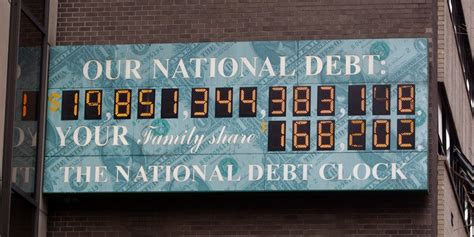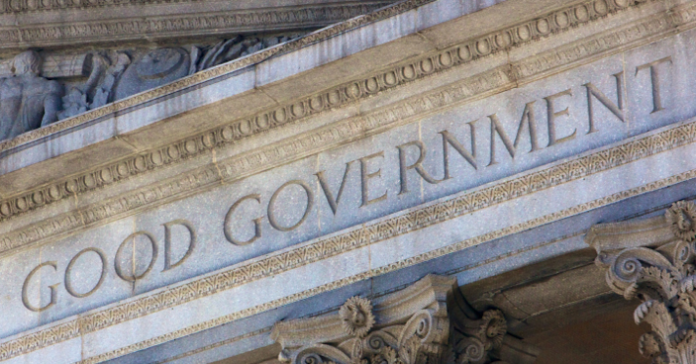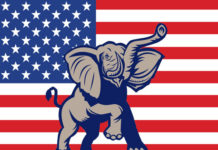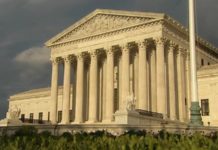The biggest mistake the voting public ever makes is to ask the government to ‘do something’ about problems the government is powerless to solve. Government can always ‘do something,’ but government rarely does anything helpful. Generally speaking, ‘do something solutions’ only make things worse. This is true with all things, and particularly with regards to the economy.
Free market economies have tremendous recuperative powers. The best way to ‘fix’ an economy is to leave it alone so it can fix itself. Obama inherited a recession, and refused to get out of the way. Though the markets were recuperative under Obama, their ability to recuperate was largely muted. Trump, on the other hand, reduced the role of government in the economy, and in doing so, Trump unleashed the recuperative powers inherent in the markets.
 The phrase ‘grow the economy’ is the opposite message from the one we need to send, as it infers an active government role. The correct phrase is ‘unleash the economy,’ and while Trump deserves zero credit for ‘growing the economy,’ he deserves a great deal of credit for unleashing it. Has Trump been perfect in this regard? Far from it. But thus far, he has done more good than harm, and that’s not as easy as it sounds!
The phrase ‘grow the economy’ is the opposite message from the one we need to send, as it infers an active government role. The correct phrase is ‘unleash the economy,’ and while Trump deserves zero credit for ‘growing the economy,’ he deserves a great deal of credit for unleashing it. Has Trump been perfect in this regard? Far from it. But thus far, he has done more good than harm, and that’s not as easy as it sounds!
Many chastise Trump for running sky-high deficits, but in reality, over the long haul we need to run deficits, as we have a debt-based monetary system. Many claim that we have a fiat system, but that is not really correct. If we had a fiat system, the Treasury would print money into existence. The Treasury does keep about $861 billion in paper and coin based currency in circulation (and this money is fiat), but $861 billion is a drop in the bucket compared to the totality of money in circulation, most of which exists only in bank ledgers. The trillions and trillions of dollars in bank ledgers is backed by debt.
The Federal Reserve creates money, literally by spending it into existence, buying Federal Savings Bonds (aka Treasury Notes). This drives demand for federal debt, forcing the government to borrow money. If the federal government did not borrow money, there would be no need to print savings bonds, and the Fed would not be able to expand our money supply. In order to keep the value of money stable, the Fed must ensure that the supply of money grows at the same pace the economy grows. In other words, if we have 4% annual GDP growth, and we want the value of the dollar to remain constant, we need 4% more dollars in circulation every year.
Every dollar that exists, other than the $861 billion in paper and coin currency, also represents a dollar of debt. That means that if one person has a net worth of $100,000, other people must have $100,000 in net debt to balance that net worth out to zero. It also means that statements like, “the top X percent of the population own Y percent of the wealth” are meaningless. Most people have a negative net-worth, owing money on their house, their education, their car, and various other things, and yet they also have a house, a car, an education, and various other things. With a debt-based money supply, a small number of people will ALWAYS own most of the wealth, as the rest of the population holds more debt than they hold assets. As one moves toward retirement, they tend to have less debt and more assets. Most of the wealth is held by people at the end of their working careers, or in retirement, whereas most of the debt is held by younger workers, and that’s baked into our monetary system. It’s neither a good, nor a bad thing. It simply is what it is.
Recessions have three possible causes: natural disasters, bad government policies, and rapid (unexpected) changes in the supply/value of money. Of the three, changes in the money supply are the most common, and for good reason. All prices constantly change, representing the changes in economic outputs, in consumption, and in everything else within an economy that is always in flux. Free market thinkers talk about balance, but we never actually find balance. It is more accurate to say that a free market moves toward a constantly changing balance. No economist can say, with any certainty, what the correct price for a good or service is, but in a healthy economy the current price is always close to the correct, balanced price. The current price is, in fact, the best guess of what the balanced price should be.
Imagine what happens to pricing if the value of the dollar suddenly changes, relative to everything else, such that nobody has even a close estimate of what the correct price of anything should be. When that happens, the entire economy goes into a period of price discovery, all at once, causing a recession.
When we were on a gold standard, the value of money equaled the price of gold. If we printed too much money, people would start turning money in for gold, causing a run on our gold reserves. This limited the power of the government to spend. The value of money was, however, tied to the value of gold, and the value of gold can change as new veins are mined, and as reserve levels change. Whenever the value of gold changed, so too did the value of money, and whenever the value of gold changed too rapidly, it caused a recession.
Without a gold standard, the fed keeps the value of the dollar constant by keeping the number of dollars in circulation constant. The fed, unfortunately, does not directly control this number. The fed has a number of tools it can use to manipulate bank lending, but it does not control it directly, and whenever the supply of money in circulation changes faster than the economy can react, the economy goes into a period of price discovery, and a recession.
A diverse economy like ours cannot all go up, or all go down, at once, unless some external force acts upon it. Our economy is also too dispersed, geographically, for natural disasters to cause recessions (other than locally). All economies have natural up and down cycles, but those cycles vary by industry, with some industries being up, and others down, at different times. If an economy is not sufficiently diverse, the normal boom-and-bust cycle of free markets can cause a recession, and if an economy is not geographically dispersed, a natural disaster can cause one as well. In our case, we only have two causes, the first being changes in the supply of money (as discussed above), and the second being government policies. Government policies, like changes in the value of money, can impact the entire economy, and in doing so, can cause booms and busts.
Let’s take all of that into consideration when looking at the deficit. Since we have to grow the money supply at the rate of economic growth to keep the value of money constant, growth in the supply of money must be equal to GDP growth, plus the intended rate of inflation. We’re running at about a 4% rate of growth, and the Fed wants a 2% rate of inflation, so we need to expand our supply of money by 6% of GDP, under our current economic conditions, to meet the Fed target. Our GDP is $18.67 trillion dollars. Six percent of that is $1.12 trillion. For the Fed to meet it’s target rate of inflation, the money supply must grow by $1.12 trillion a year, under our current economic conditions, which also means that we need to expand our total debt by $1.12 trillion a year.
Let’s compare the growth, thus far, under Trump, to the lack of growth under Obama. Obama averaged about a 1.5% rate of growth during his presidency. With a 2% inflation target, we needed to grow the supply of money by 3.5% a year under Obama. With a $18.67 trillion dollar economy, 3.5% would be $653 billion. The economy, of course, gets larger every year, and was smaller, in terms of total dollars, under Obama than it is now. The US GDP was $16.155 trillion in 2012 (half-way through the Obama years). 3.5% of that would be $565 billion, or roughly half the current deficit under Trump. In other words, how ‘good’ or ‘bad’ a deficit is, is directly related to both the size of the economy, as well as it’s rate of growth. Since we expand our money supply through debt, we need some deficit spending to keep the supply of money growing, as the economy grows!
Now – I’m not going to tell you that the government can safely run deficits equal to the rate of GDP growth, plus the intended rate of inflation. That’s NOT true. The growth we need in the supply of money is after banks multiply what the Fed creates (aka the M2 money supply), and government deficit spending only contributes a part of that. What I will say is that we need the M2 money supply to grow at the same pace the GDP grows, plus the target rate of inflation, and if bank lending does not generate the monetary expansion we need, deficit spending will have to pick up the slack. At the same time, if bank lending exceeds the desired growth in the money supply, the government would need to run a surplus, unless the Fed can slow-down bank lending. This creates a relationship between federal borrowing and bank lending, in which federal borrowing can choke-out private borrowing, slowing the economy.
Because of this, the deficit is not a very important measurement when looked at in raw numbers. The deficit as a percent of GDP is far more relevant, and particularly after taking banking activity into account. The impact the deficit (or lack thereof) has on the M2 money supply is the most important number.
We printed a ton of money during the Obama presidency. If bank lending expands, we’ll need our deficits to shrink accordingly, as a percent of GDP.
Inflation, too, is something most people don’t fully understand, but really, inflation is a simple concept in which if I have an economy of four dollars and four apples (and nothing else), each apple will cost a dollar. If I expand the number of dollars to eight, but still have four apples, each apple will suddenly cost two dollars. That’s inflation, and it really is that simple. The complicated part is figuring out how many dollars there are, how many apples there are, and how many of everything else we have in the economy. In other words, it’s the economy that is complicated – not inflation – and as such, the way inflation works through the economy is complicated, even though inflation itself is the simplest thing in the world to understand. If the number of dollars in circulation changes, relative to the size of the GDP, the value of the dollar will also change, and rapid, unexpected changes cause recessions.
The price of gold moves almost in lock-step with Federal Reserve announcements, and this makes sense, given that we used to have a gold standard (some economists still say ‘gold is money’). Gold does not move with inflation, so much as it moves with the expectation of future inflation, based on Federal Reserve announcements. Other precious metals follow, with precious gemstones and investment assets (like stocks) close behind. Non-consumable commodities, like crude oil and raw steel, come next. Consumable commodities follow. Finally, wages move. Gold is the leading indicator of inflation, and labor is the trailing indicator.
Once inflation hits wages, it moves in waves, with each change in the cost of labor forcing the price of everything that has labor in it to also go up. Each wave of labor-inflation triggers another wave, until the cost of labor catches up with the costs of everything else, and a new relative balance is achieved.
The Federal Reserve can retract the supply of money (by selling bonds), just as easily as it can grow the supply of money (by buying bonds). Because of this, the Fed often calls non-wage inflation ‘transitory,’ on the assumption that the Fed will throw on the brakes before wage inflation gets out of hand. In reality, the Fed is more afraid of deflation than inflation, so it’s ability to throw on the brakes is questionable.
If I had access to all the right data, in real time, I would track the rate of inflation, and I would track it with multiple numbers, across multiple stages of its development. I would track precious metals and gemstones, investment assets, non-consumable commodities, consumable commodities, and labor, all separately, to see not only what the actual rate of inflation is, at any given point in time, but also where it is, as it works its way through the economy. I would also look at wage inflation among our trading partners, on the assumption that wage inflation will start where labor is cheapest, and come to the United States only after growth in less developed economies makes it economical to hire more Americans again.
Where asset growth exceeds inflation – that’s represents a bubble, and we would serve ourselves well by studying the causes of bubbles, rather than the causes of recessions. Bubbles cause recessions. Too many smart people try to figure out why bubbles burst, when really, bursting is simply what bubbles do.
The Federal Reserve does track all of these things, but good luck finding all of the measurements in one place, and good luck finding any meaningful analysis of what all of this means in terms of inflation, and in terms of the impact of deficit spending.
Right now the overall debt load is 112% of GDP. That’s too high. 50% of GDP would be better. Understand, however, that some of the debt load is based on inflation already baked into the economy, that has not yet migrated to wages. Understand too that as the Federal Reserve reduces its holdings of federal debt, it can write some of that debt off. Is the Federal Reserve ‘good enough’ at its job to transition from the extraordinary monetary expansion of the past ten years, into a stable, low inflation trajectory? Can the Federal Government control taxation/spending levels enough to reduce the debt-to-GDP level, while at the same time helping the Fed control the supply of money? I, frankly, have no idea, but all of these things are related, and, at least thus far, Jerome Powell (the current Fed chairman) seems to know what he is doing. I wish him well, and I am glad I don’t have his job.
I do NOT like hearing Trump telling Powell to keep interest rates down. Mr. Powell has to do what Mr. Powell has to do, and the government needs to act accordingly. If the government tries to rely entirely on the Fed, we’re in trouble.
Trade policy is related to all of this as well, as wage inflation coincides with economic expansion, and trade has a direct impact on the economy. Our role as a reserve currency is relevant too, as that role creates over-seas markets for both dollars and dollar-denominated debt. All of these things are inter-related.
What we will do is to tolerate higher inflation for some time, and we’ll do so more with bank lending than with Fed expansion. That will reduce the debt-to-GDP ratio back to a sustainable level, without reducing the actual debt. The longer this process takes, the less apt it will be to cause a recession, though it could also act as a head-wind against economic growth. We also have a number of bubbles in our economy, such as in healthcare and education – both of which cost a lot more, as a percent of GDP, than can be sustained.
People ask me what the economy will do. I look at all of these factors (and this article just scratches the surface), and what I see is an economy striving for balance, with an incredibly complicated array of forces, acting like rubber bands – all pulling the economy in different directions, some closer to and others further away from the economy’s natural balance. The economy grows fastest at its natural balance, so I tend to favor government actions that make the economy more efficient, and I tend to look down on government actions that make the economy less efficient. Where political necessities force government actions that make the economy less efficient, I tend to favor policies that minimize the government’s impact – policies that Milton Friedman would have called ‘the least bad options available.’
And I never, ever, ask the government to just ‘do something.’
As always, if you agree with Global Liberty Media’s message, please help spread it. You can share the link directly, or you can use the share buttons below.

























